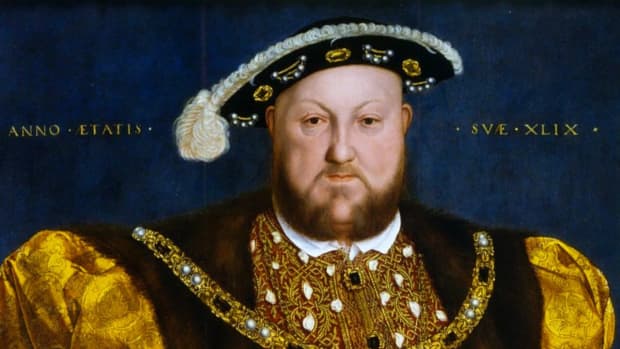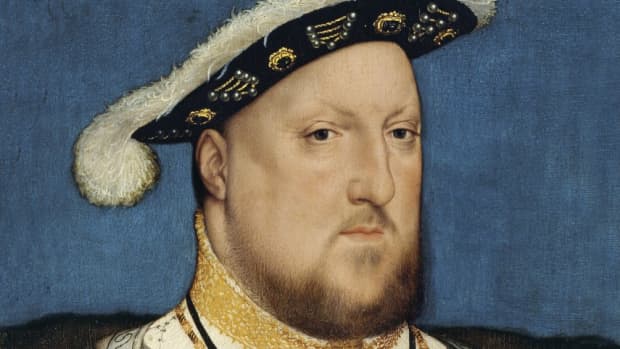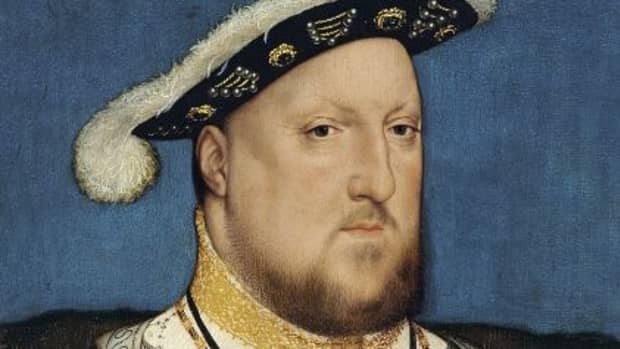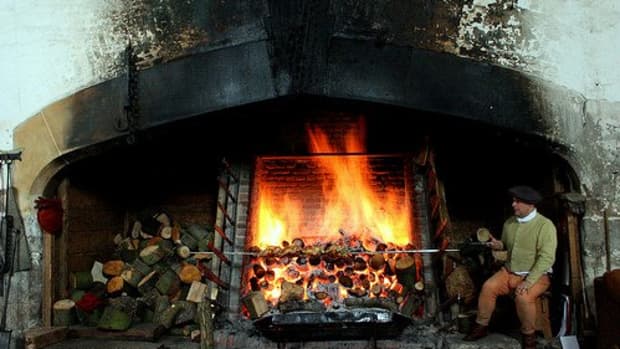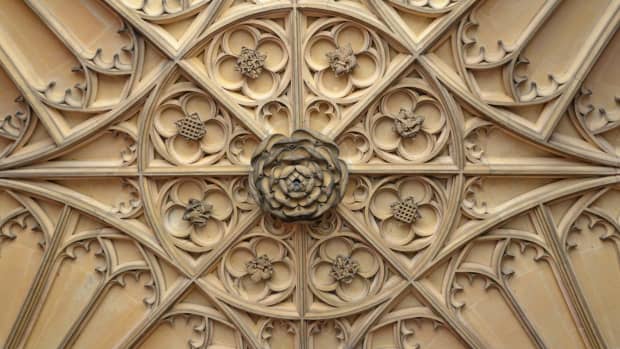King Henry VIII: 8 Fascinating Facts About the Tudor Tyrant
Henry Liked Ladies-in-Waiting
It's well known that King Henry VIII went through wives like hankies. The ladies weren't all strangers to each other. Anne Boleyn, Jane Seymour and Katherine Howard were their predecessors' ladies-in-waiting. You might argue that they were easy prey for Henry.
Henry's second and fifth wives, Anne Boleyn and Katherine Howard, were nieces of Thomas Howard, 3rd Duke of Norfolk, a key member of the Tudor court. His sixth wife, Catherine Parr, was an acquaintance of Mary Tudor, later Queen Mary I, and her mother, Catherine of Aragon, had been a friend of Catherine Parr's mother, Maud.
Henry divorced Catherine of Aragon in 1533 after 24 years. His five other wives, Anne Boleyn, Jane, Anne of Cleves, Katherine and Catherine followed one another over the next decade. Catherine Parr married him in July 1543.
Bessie Blount, the mother of Henry's illegitimate son Henry Fitzroy, Duke of Richmond and Somerset, served in Catherine of Aragon's household. Henry Fitzroy was married to Mary Boleyn when he died.
Henry VIII Bathed Infrequently
The Tudors believed that bathing opened the skin's pores and permitted airborne diseases into the body. Henry followed the medical advice and only took his luxurious sunken steam baths sparingly. Instead, he washed with cold water in the morning, the evening, before and after dining. Henry always kept a piece of real fur next to his skin so that fleas would be tempted towards that and not his skin.
Despite the lack of bathing, Henry's court was obsessed with cleanliness and smelling "sweet" so liberal amounts of fragrances, including rose oil, were used to ensure that the royal nose met with no unpleasant aromas. Rose oil was apt; the emblem of the family was the Tudor rose. Undergarments were changed frequently, and outer garments were well laundered, even if the body wearing them was not as fortunate.
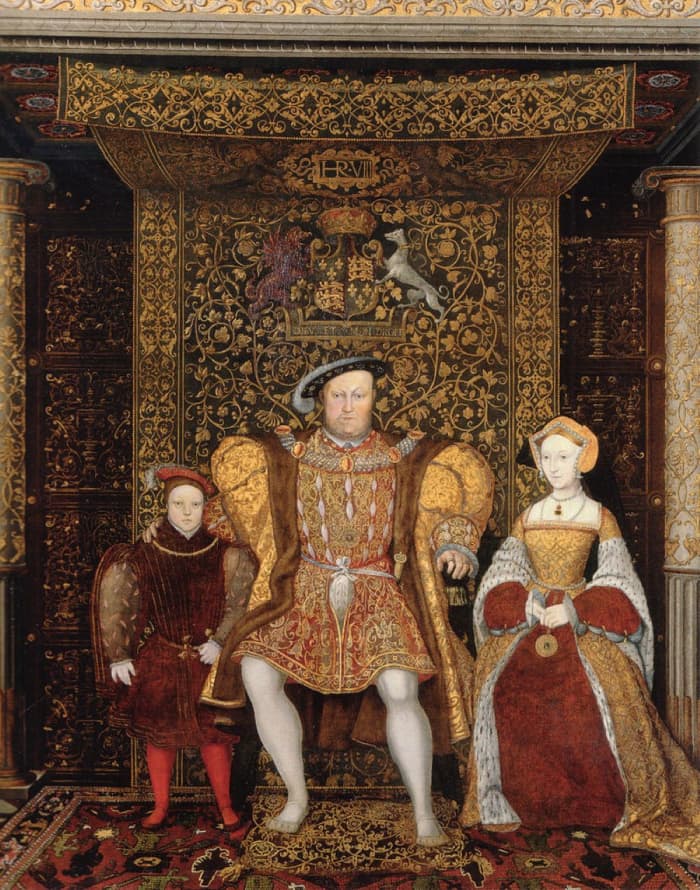
Henry VIII, his heir Edward and Jane Seymour. She died eight years before the portrait was commissioned.
Public domain
Henry VIII's Pewter Thrones
Henry VIII had a private toilet in each of his palaces. No one was permitted to use them except for him. The facilities were guarded by soldiers. His stool chambers contained shelves of books and had paintings on the walls to keep him amused. The toilets were pewter with a velvet cushion seat stuffed with swans feathers and were studded with gilt nails. Only the Groom of the Stool was admitted into this intimate space. His team of privy chamber attendants was urged never to talk about his visits.
Whilst on a royal progress around the country, it was expected that his hosts would provide a similarly luxurious close stool for his sole use. Even if that bankrupted them.
Henry Was a Cultured Tyrant
We forget that beneath his boorish nature, paranoia and marital issues Henry was a well-educated and creative man. He impressed the philosopher Erasmus as a child, and early in his reign, he wrote Defence of the Seven Sacraments in response to Martin Luther's theological text.
Henry VIII's musical skills were admired. He could sight-read music, and there was a long-held mistaken belief that he wrote "Greensleeves." He composed numerous songs, hymns and music and he was an accomplished poet.
His palaces housed over 2,000 tapestries, splendid pieces of art, symbolism and displays of wealth. Apparently, in Scotland, the Stuart palaces boasted only 200 tapestries.
Recommended
He understood the need to appear invincible and unattainably rich, so he spent a great amount on clothing, jewels and artwork that enhanced his image. He had an eye for the aesthetic, and portrait painter Hans Holbein designed unique pieces of jewelry for him.

Glastonbury Abbey was destroyed during the Dissolution of the Monasteries.
Littleblack pistol/Wikipedia Public Domain
Henry VIII's Church of England Is Almost 500 Years Old
To facilitate a divorce from Catherine of Aragon, Henry VIII set Cardinal Wolsey the unenviable task of getting his marriage annulled by the Pope so that he could try to have a male heir with Anne Boleyn. The Pope refused. Cardinal Wolsey died before he could be executed (Henry was a bad loser), and although she put up a good defence, Catherine of Aragon was discarded.
The Church of England was established with Henry at its head, and the Dissolution of the Monasteries shattered art, plate, precious religious pieces, churches and abbeys. The country endured centuries of religious tensions and persecution as monarchs switched between faiths and cast aspersions on alternative ways of worship. The Church of England has lasted for almost 500 years so far. Henry's marriage to Anne Boleyn lasted for three years.
Henry Founded the Royal Navy
When Henry came to the throne, England did not have a permanent navy. Constantly on the alert in case France or Spain felt inclined to invade, he founded the Royal Navy and increased the size to ten times its original number during his reign. He established the Woolwich Docks and the Deptford Docks. Both were close to Greenwich Palace, so he could monitor activities.
Henry's flagship the Mary Rose launched in 1511 with its sister ship, the delightfully named Peter Pomegranate. It bore this name in honour of Saint Peter and Catherine of Aragon's emblem, the pomegranate. There is no evidence that the Mary Rose was named after Henry's sister; it's more likely to have been the Virgin Mary, but Rose was a reference to the Tudor rose.
In 1545 after an impressive 33-year career, the Mary Rose sank in the English Channel during action against the French. It was raised from the seabed in 1982. We know that the Peter Pomegranate was still active in 1558; it then disappeared from records.
Henry's Courtiers Wore Padding
For most of his life, Henry VIII was slim, athletic, and deemed as handsome as his grandfather Edward IV and he was unusually tall for the time at six-foot-two. After his 1536 jousting accident which left him unconscious for hours, possibly with a mood-changing injury and with a permanent leg ulcer that restricted his movements, Henry found a way to fill his days. He ate a lot. According to historian Tracy Borman, he was a dainty eater. That said, his waist expanded to at least 52 inches, and his irascibility with it. His courtiers wore padding so that their girths were as expansive as his to help him feel better about himself.
Three Unique Gifts for a Tudor King
The King of Norway gave Henry a unique present: a polar bear (in the 1500s, these were called white bears). Henry let it swim and hunt for fish in the River Thames. Mercifully for other river users, the white bear was kept on a lead, albeit a long one.
On New Year 1532, Anne Boleyn, possibly puzzled about what to a man who had almost everything, gifted him "an exotic set of richly decorated Pyrenean boar spears". He gave her cloth of gold wall hangings in return.
When Cardinal Wolsey was unable to secure Henry's divorce from Catherine of Aragon, he attempted to win favour with the king by giving him his magnificent residence Hampton Court Palace. The gift didn't work. Henry gladly took the palace and then dispensed with Wolsey's services.
Sources
- The Private Lives of the Tudors by Tracy Borman
- 5 Facts About Henry VIII - HistoryExtra
- 30 Interesting Facts About King Henry VIII - The Fact Site
- Facts about Henry VIII | Royal Museums Greenwich
This content is accurate and true to the best of the author’s knowledge and is not meant to substitute for formal and individualized advice from a qualified professional.
© 2022 Joanne Hayle






